When Peat Speaks
I have been awarded £25,000 from CO2RE to develop and produce When Peat Speaks which will include When Peat Speaks: a Boggy Ensemble, a collaborative performance to be staged on the degraded bog, in May 2026.
The grant forms part of the UK’s national research hub for Greenhouse Gas Removal (GGR), part of a broader £30 million initiative funded by UK Research and Innovation (UKRI). The creative initiative within the hub is supported by a flexible fund of £150,000 from which seven grants have been awarded to arts and humanities projects.
I will be working within the GGR-Peat Demonstrator Project, one of five interdisciplinary GGR demonstrators funded by UKRI. My focus will be on the Pwllpeiran Research Upland Centre at Aberystwyth University, which is one of the three key sites within the GGR-Peat initiative.
The project, titled When Peat Speaks, will be developed in close consultation with Professor Mariecia Fraser and the team at Pwllpeiran. The work will incorporate a variety of datasets gathered from treatments, measurements, and interventions conducted across 32 plots (20m x 20m each) on a degraded peatland. The project will utilise the scientific data to generate drawings, sculptures, sound notations, and sonic and musical scores.
This is a unique opportunity for me to contribute to the conversation around Greenhouse Gas Removal, working within the intersection of art and science in a way that will resonate with both academic and public audiences.
The project will run from May 2025 – June 2026.
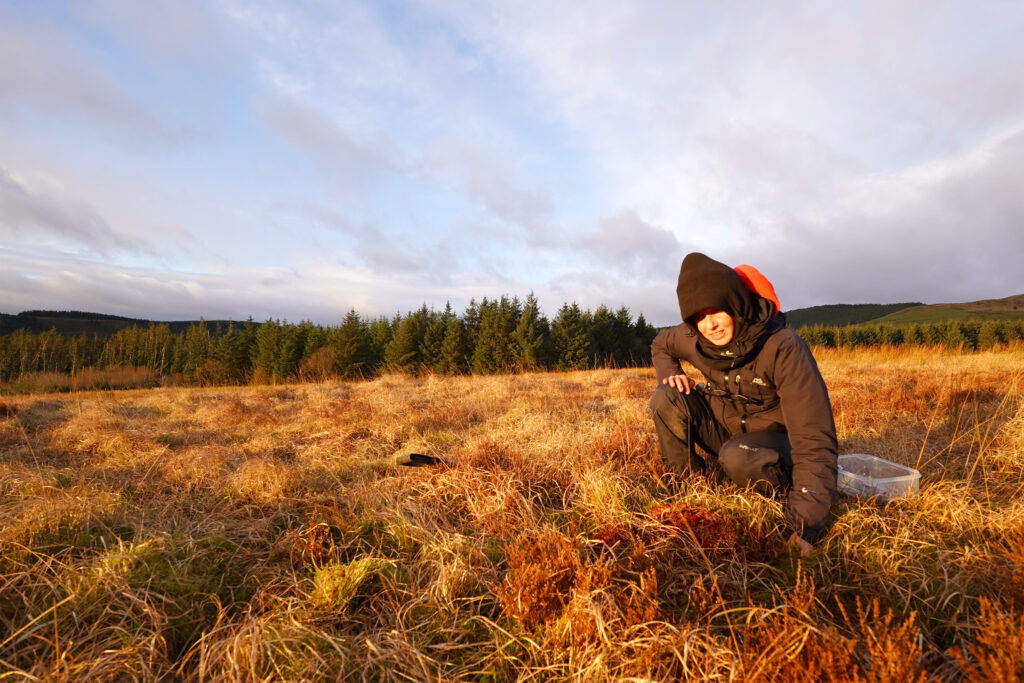
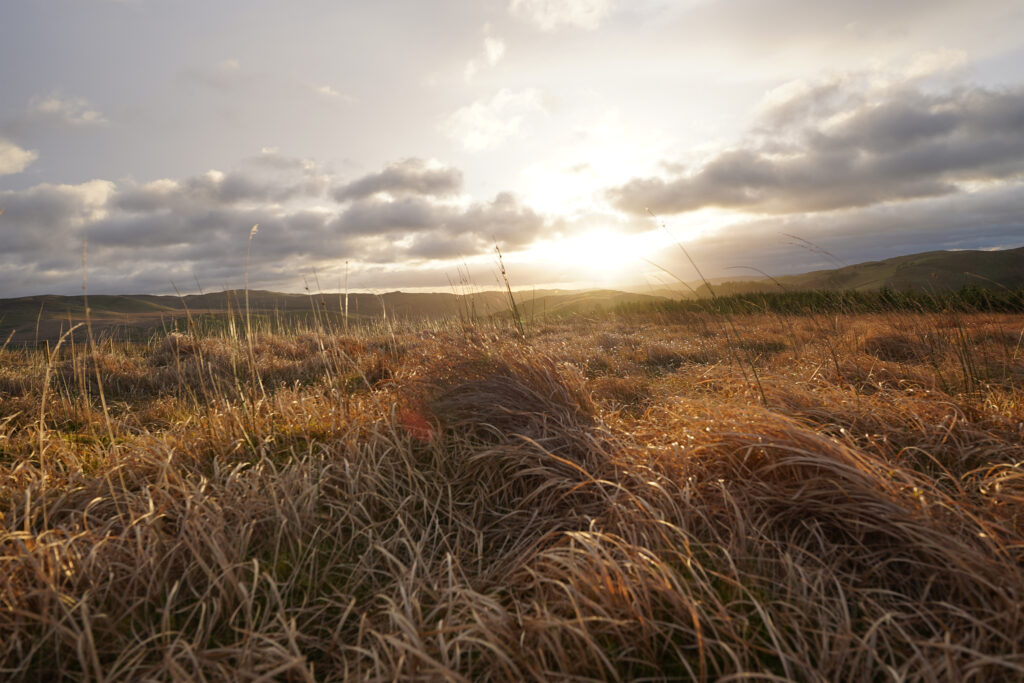
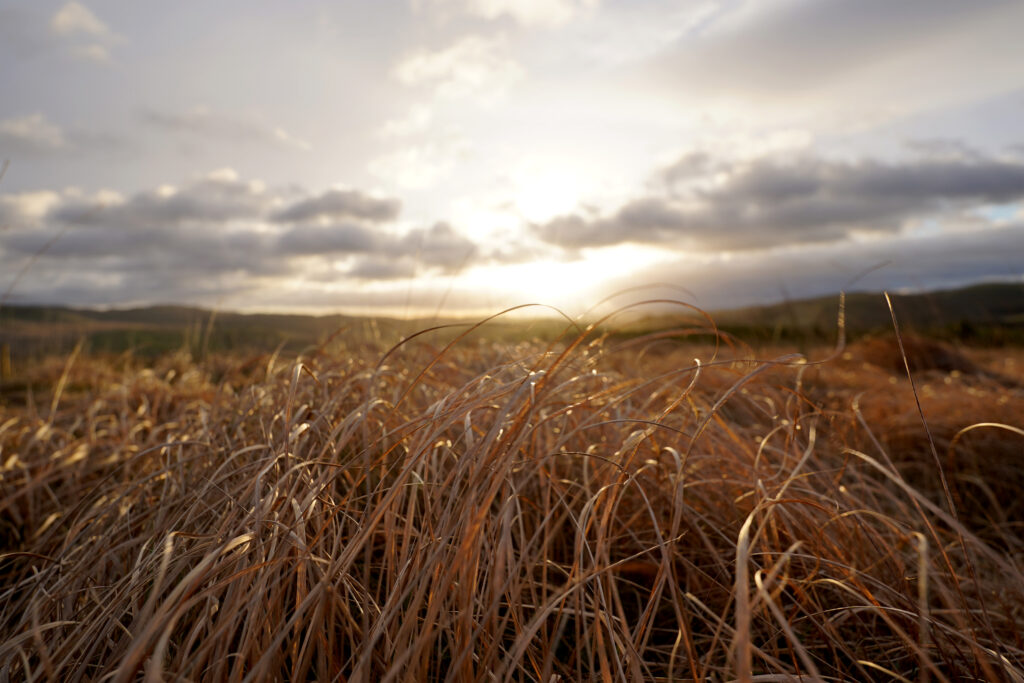
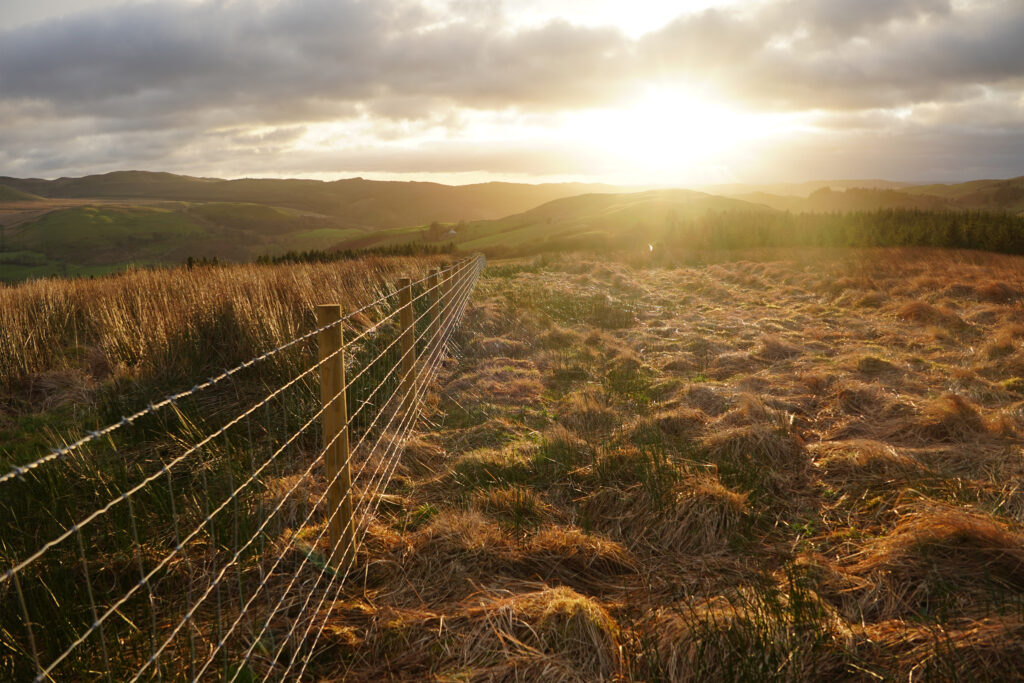
A Boggy Cloud
Hundreds of thousands of pinpricks and hundreds of meters of tangled paper strips will accumulate over time to resemble a large amorphous cloud-like form.
The weightless network of delicate perforated paper strips is paradoxically composed of dense ecological memory, millennia of carbon, organic matter, and environmental history.
The Boggy Cloud is formed via a process of accumulation and erasure. The empty holes render the data void – illegible and therefore useless, referencing the often inaccessible and impenetrable nature of unprocessed scientific data.
The strips of paper resemble discarded off-cuts, referencing data degradation, misinterpretation and instability.
The Boggy Cloud materialises the data; when handled, thrown, or suspended in the air, it gives shape to otherwise abstract information, it becomes momentarily active lively matter.
The durational project makes time visible in ways that challenge anthropocentric narratives. It is not just about human endurance—it’s about more-than-human rhythms, ecological time, and data as an active lively material participant.
Making the Boggy Cloud in the studio..

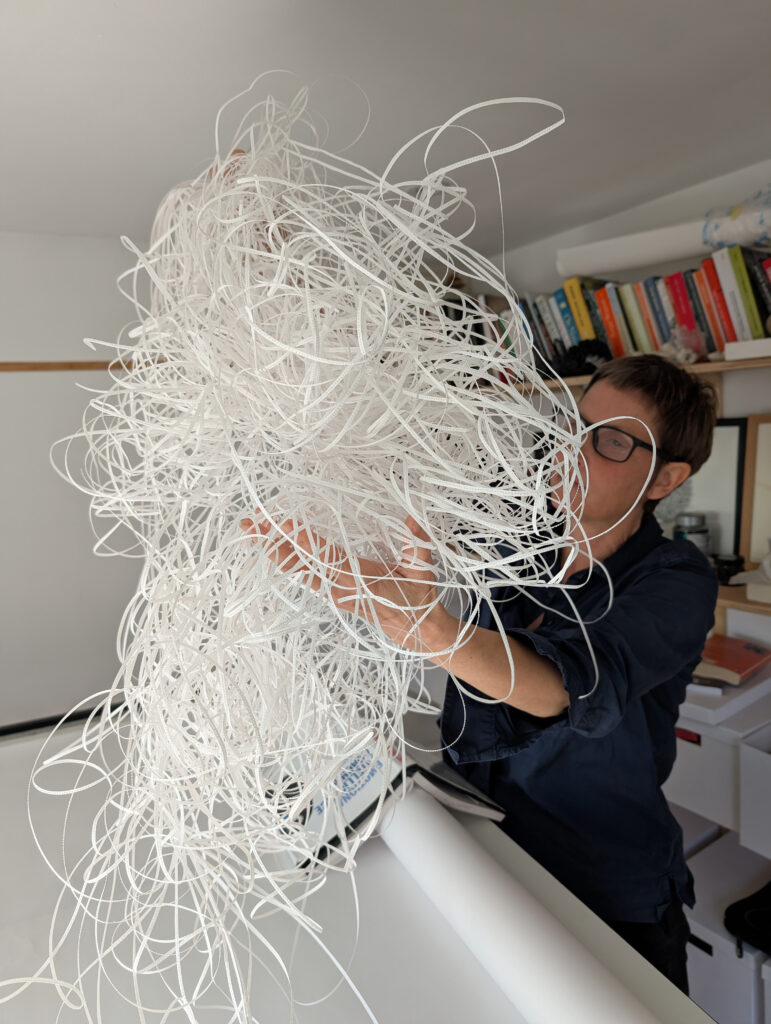

I took the Boggy Cloud (in progress) to throw in the air above the degraded peatland adjacent to the GGR- Peat research site at Pwllpeiran Upland Research Centre, Cambrian Mountains. A male Cuckoo’s call resounding over the peatland made the experience even more special. The cloud needs to be at least 4 times bigger, so 4 months of data to have the impact I want. This cloud as it is contains approx. 249,984 data points (pin pricks) so to get to 999,936 I have my work cut out..
A Boggy Cloudy Performance
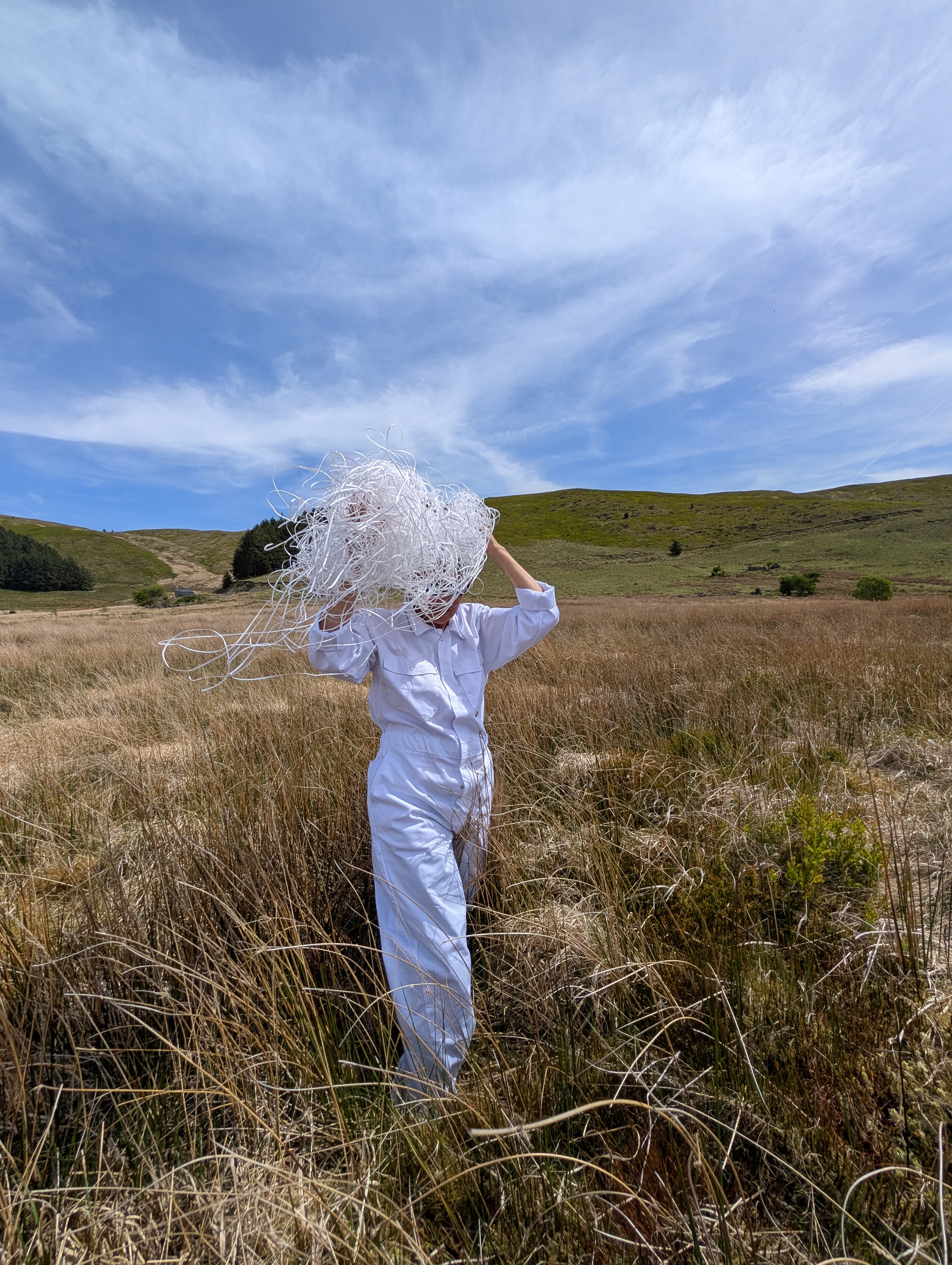





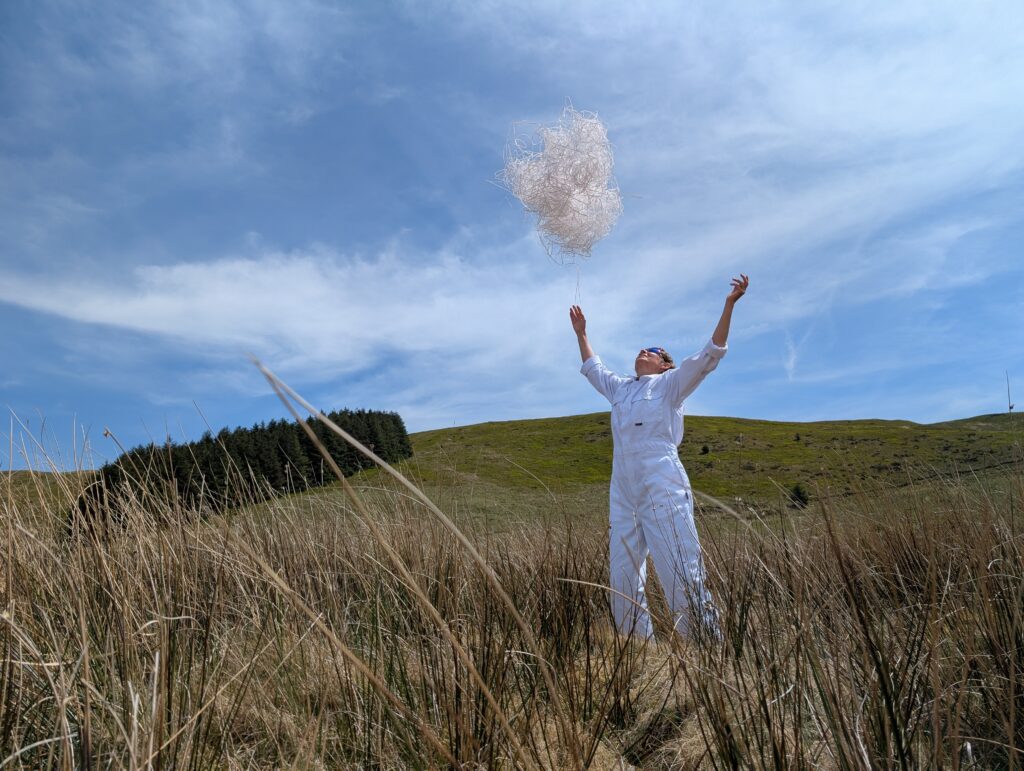
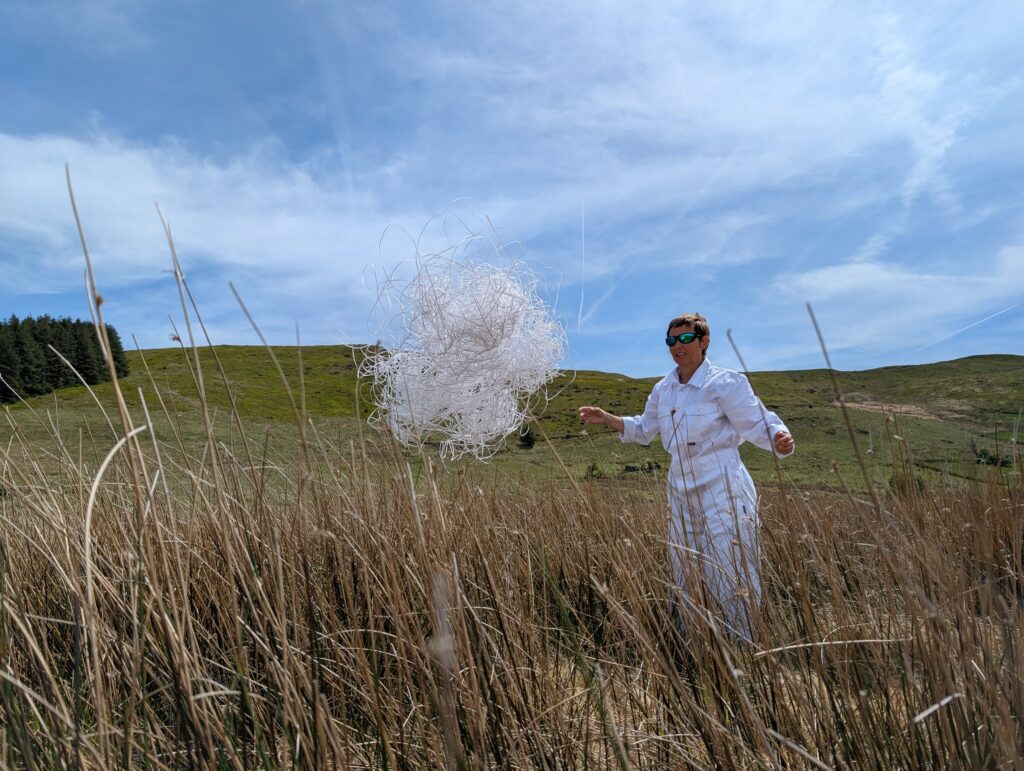
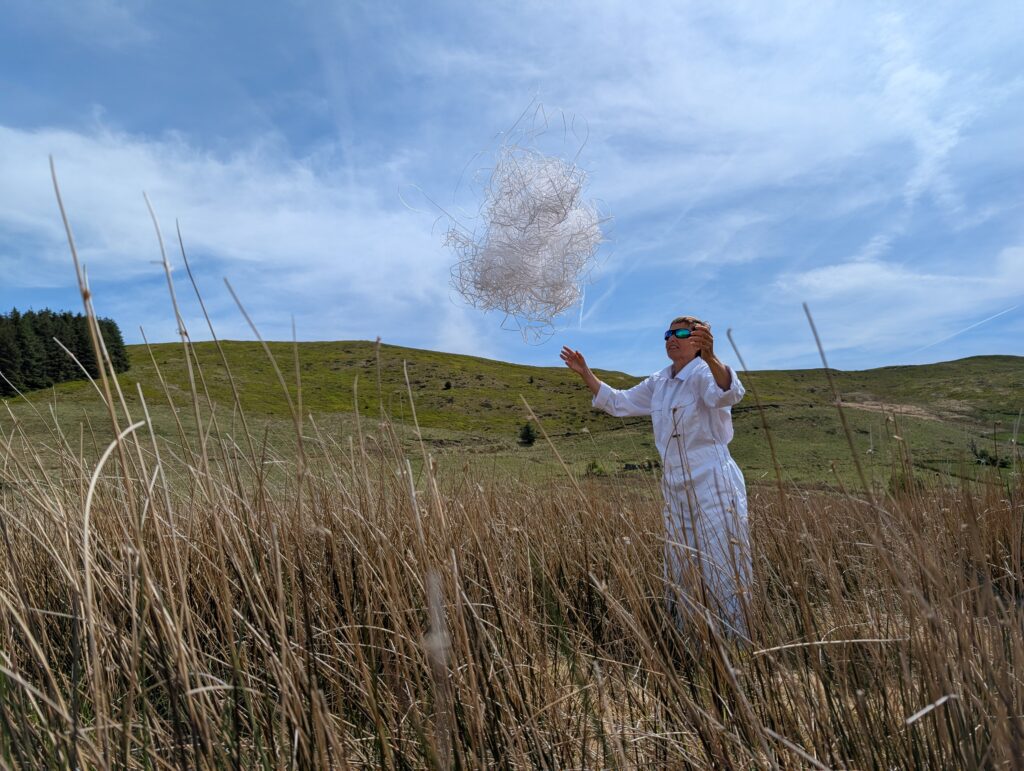
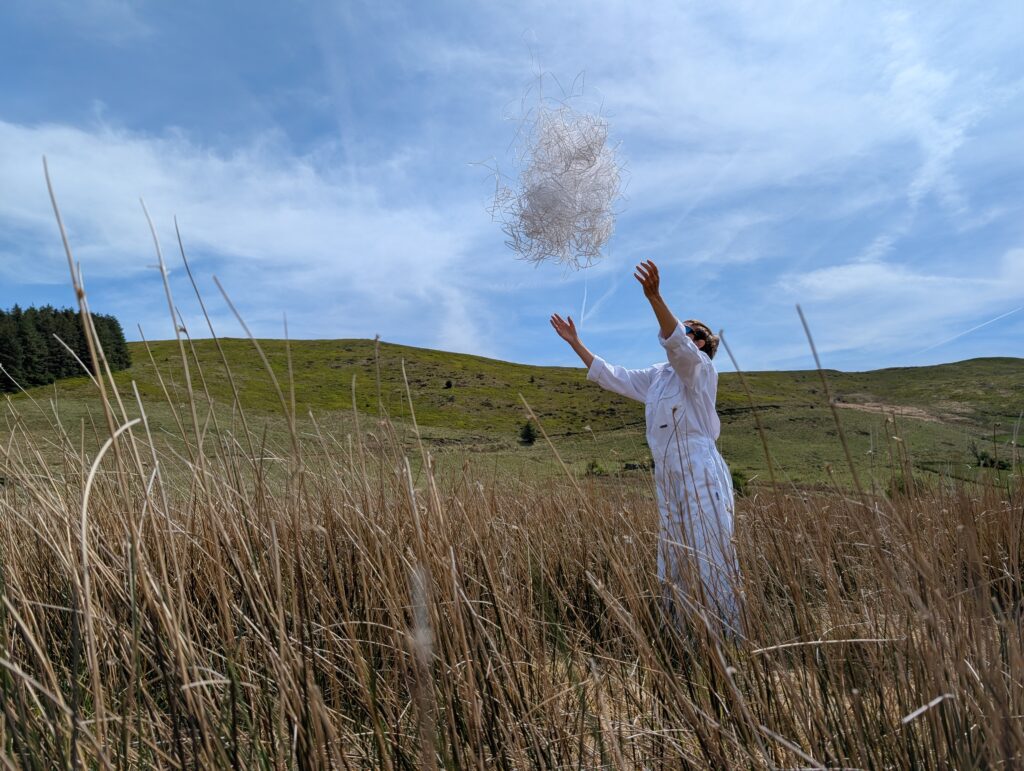
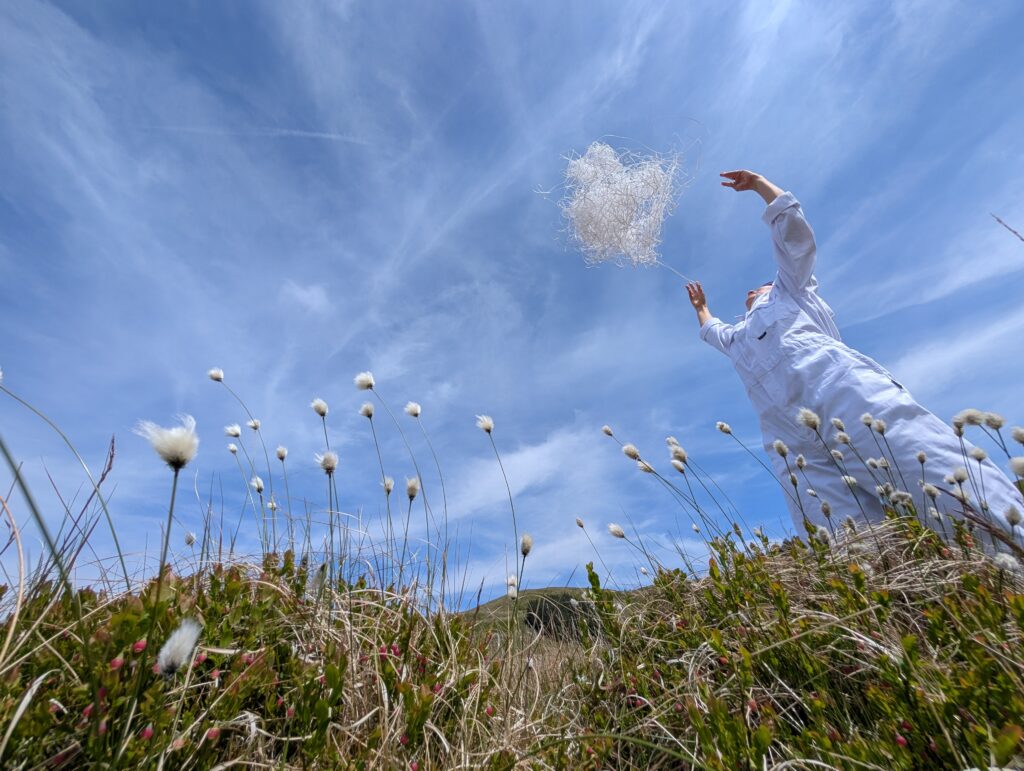
Another step closer to the definitive image – We carried a trampoline up to the high bog so I could fly with the boggy data cloud. The data critter and I both became airborne — hovering over the ancient wet boggy land, our bodies entangled, becoming kin.
It was very windy, so I didn’t dare let go of the cloud. Its form collapsed, more squashed than cloud-like. But I love the shapes my body made – my limbs stretched, and bare toes appearing to skim the peaty pools below.
I need a much bigger data cloud (a few more months of pricking still to go), a clear blue sky dotted with small, fluffy cumulus humilis, no wind, and the strength and skill to leap higher.
And for my amazing Ash to catch the perfect moment – when the cloud looks like a cloud, freed from my grasp but still in relation to me. Maybe one of its tentacular strips just grazing my fingertip.


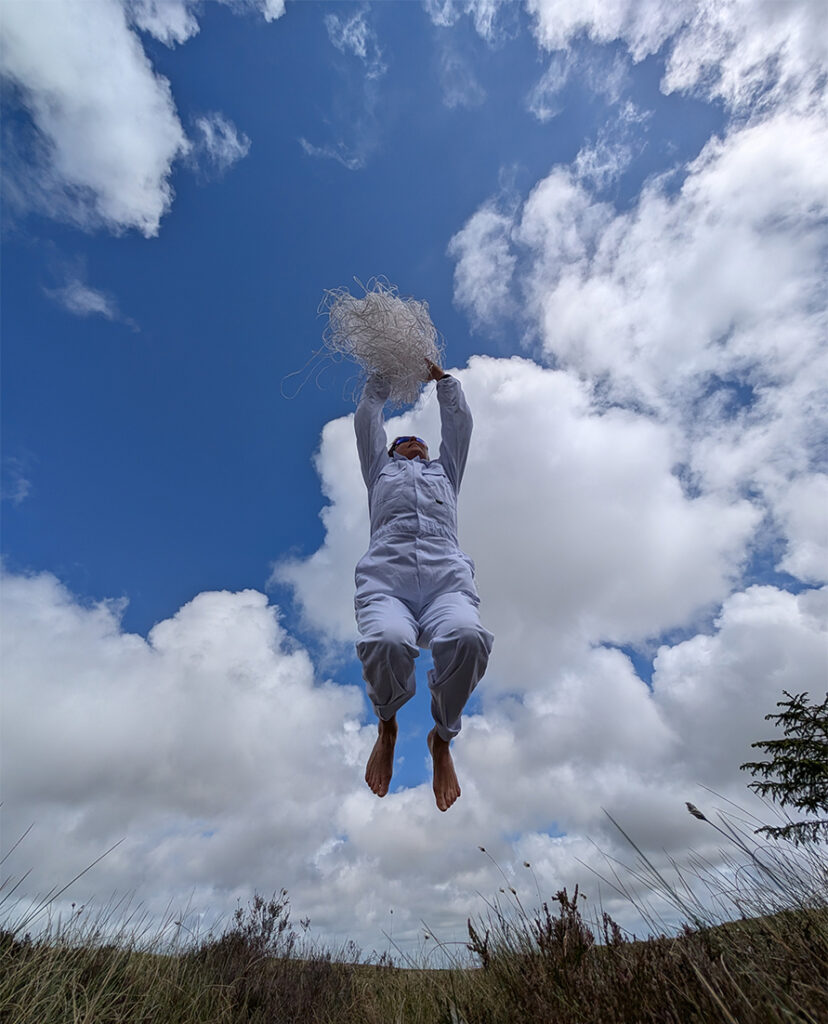

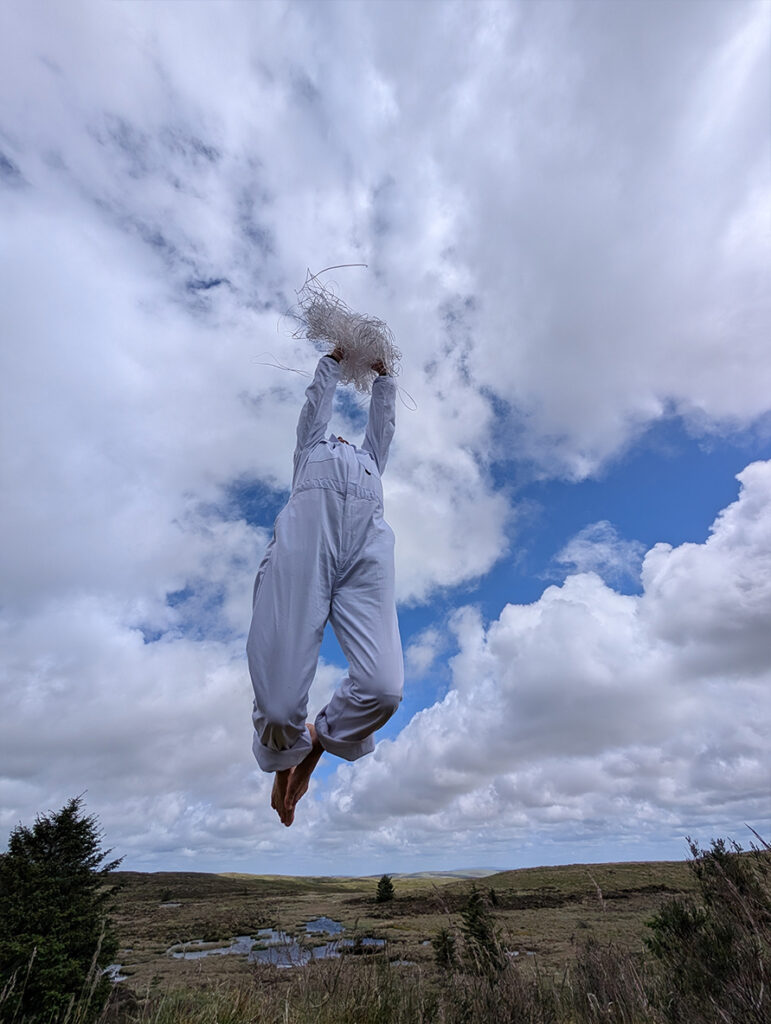
Gassy Drawings
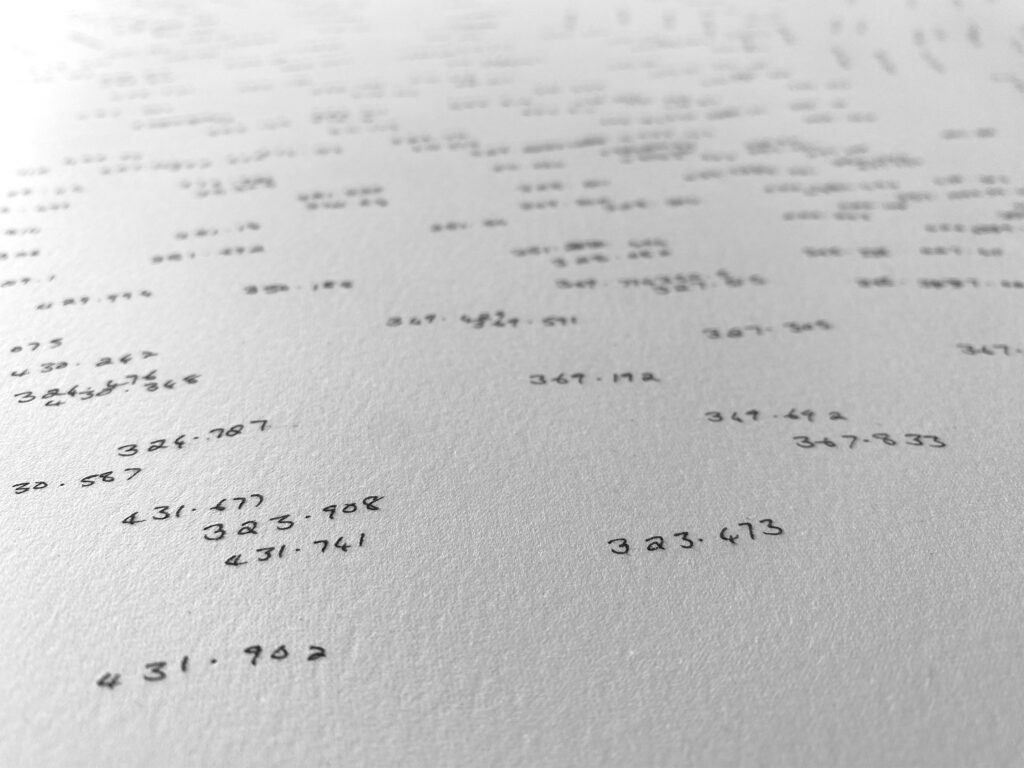
I now have access to the GGR- Demonstrator site datasets gathered from the treatments, measurements, and interventions conducted across 32 plots (20m x 20m each) on the degraded peatland at Pwllpieran. It was wonderful to start the first in a series of new Gassy Drawings– ink on paper 154 x 106 cm. I started with the Carbon Dioxide (CO2) readings, next I will do the methane readings (CH4). This first dataset has 29,244 readings, all 6 digits approx. So each drawing will contain 175,464 approx. digits in total. It will take me about 24 hours to complete. I have access to 17 datasets made between May 2023 to October 2024, so sadly nothing more up to date. Each dataset includes multiple readings – 150 across 3 minute periods for each collar at each level of shading (sometimes 0, sometimes 30, sometimes 90 – I am not sure what ‘shading’ means yet!). All of the 6 digit readings are in parts per million.
So off I go, another endurance exercise, another durational, site-responsive, slow, and meditative process. This time in my new, second studio up on the hill, overlooking Aberystwyth and Cardigan Bay.
The drawings shift their attention from human-centred narratives to layered temporalities shaped by environmental processes, data, and multispecies relations. The drawing and its making becomes a medium for attuning to the deep time of ecosystems, placing time not only at the centre, but as a material in itself.